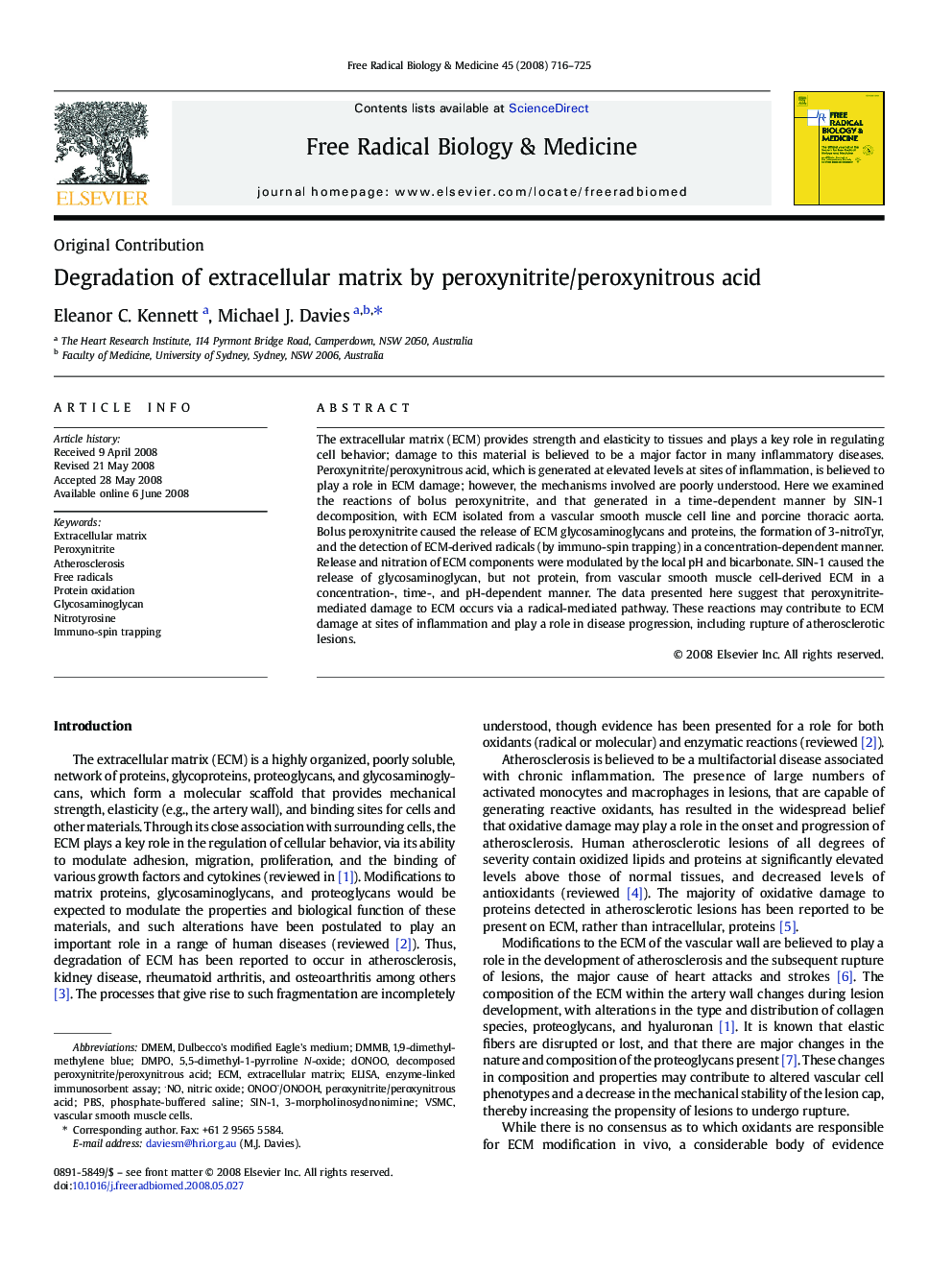| Article ID | Journal | Published Year | Pages | File Type |
|---|---|---|---|---|
| 1910850 | Free Radical Biology and Medicine | 2008 | 10 Pages |
Abstract
The extracellular matrix (ECM) provides strength and elasticity to tissues and plays a key role in regulating cell behavior; damage to this material is believed to be a major factor in many inflammatory diseases. Peroxynitrite/peroxynitrous acid, which is generated at elevated levels at sites of inflammation, is believed to play a role in ECM damage; however, the mechanisms involved are poorly understood. Here we examined the reactions of bolus peroxynitrite, and that generated in a time-dependent manner by SIN-1 decomposition, with ECM isolated from a vascular smooth muscle cell line and porcine thoracic aorta. Bolus peroxynitrite caused the release of ECM glycosaminoglycans and proteins, the formation of 3-nitroTyr, and the detection of ECM-derived radicals (by immuno-spin trapping) in a concentration-dependent manner. Release and nitration of ECM components were modulated by the local pH and bicarbonate. SIN-1 caused the release of glycosaminoglycan, but not protein, from vascular smooth muscle cell-derived ECM in a concentration-, time-, and pH-dependent manner. The data presented here suggest that peroxynitrite-mediated damage to ECM occurs via a radical-mediated pathway. These reactions may contribute to ECM damage at sites of inflammation and play a role in disease progression, including rupture of atherosclerotic lesions.
Keywords
1,9-dimethylmethylene blueVascular smooth muscle cells.PBSDMPODMEMDMMBSIN-1VSMCECM3-morpholinosydnonimine5,5-dimethyl-1-pyrroline N-oxideDulbecco's modified Eagle's mediumAtherosclerosisProtein oxidationEnzyme-linked immunosorbent assayELISAFree radicalsExtracellular matrixPhosphate-buffered salinenitrotyrosineNitric oxidePeroxynitriteGlycosaminoglycanImmuno-spin trapping
Related Topics
Life Sciences
Biochemistry, Genetics and Molecular Biology
Ageing
Authors
Eleanor C. Kennett, Michael J. Davies,
